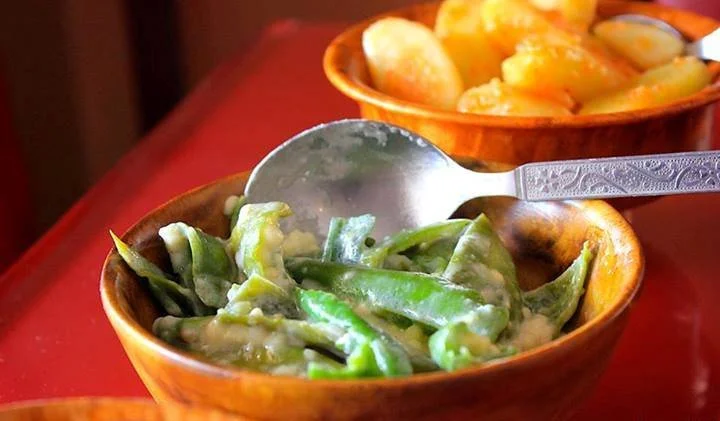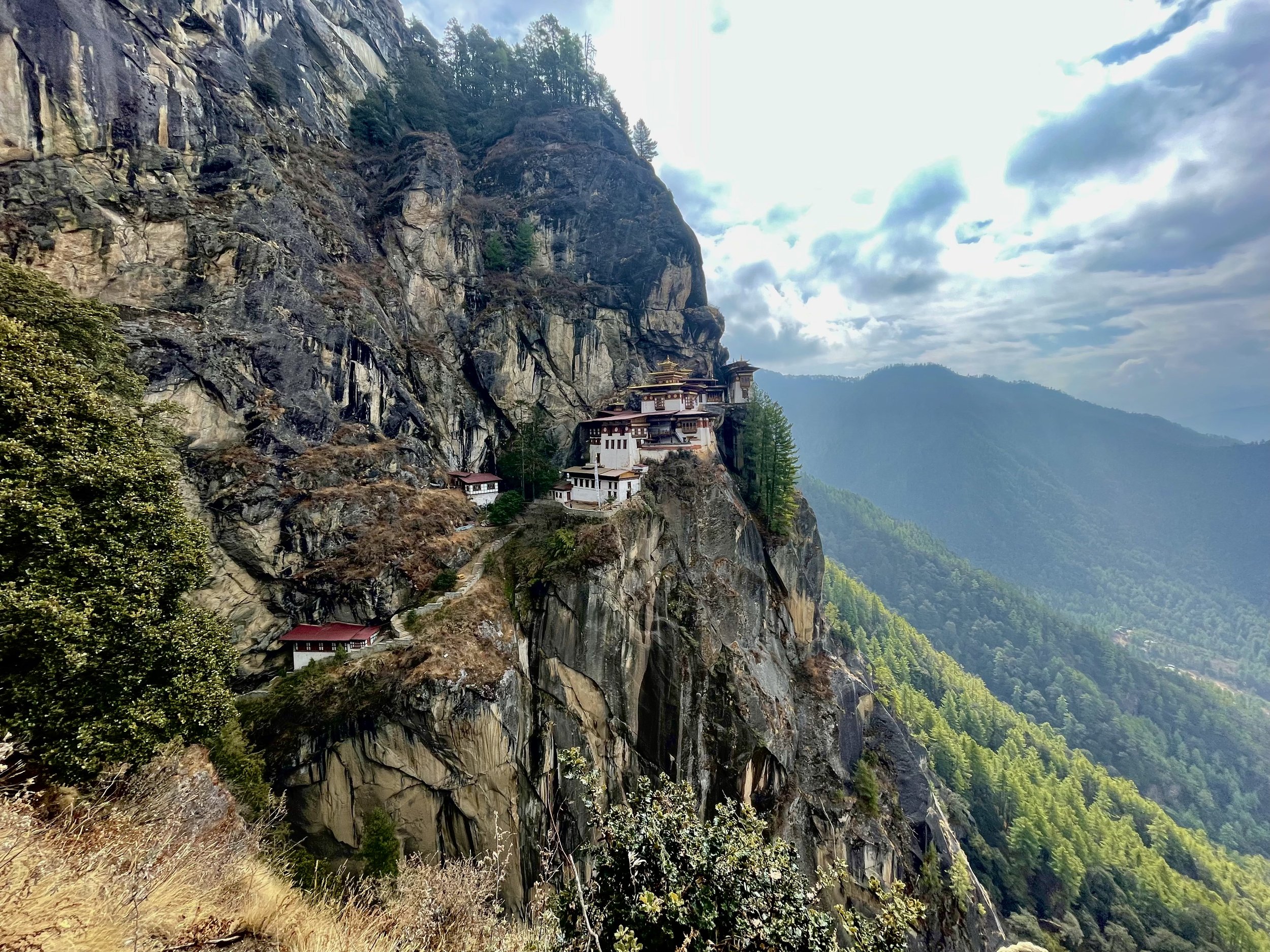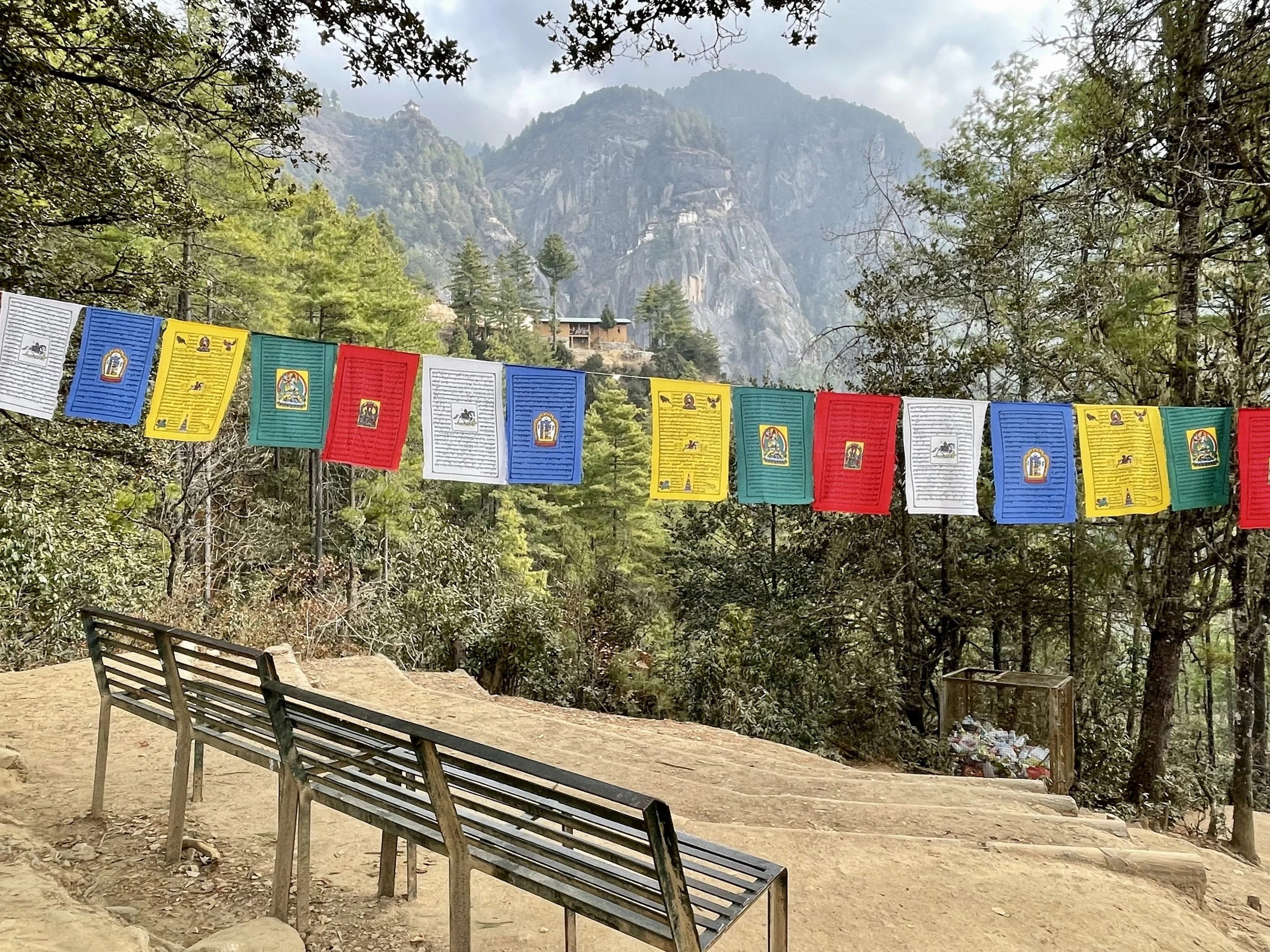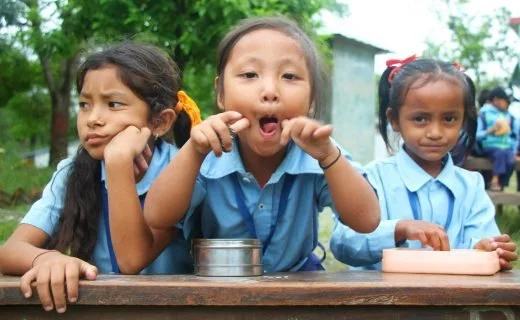Written By: Sophie Echeverry
Exploring Food in Bhutan: The Land of Gross National Happiness
In the heart of the Himalayas, one of the last remaining Buddhist kingdoms in the world is found. Often referred to as the "Land of the Thunder Dragon," Bhutan is known for its stunning landscapes, vibrant culture, and unique history shrouded in mystery and mythology. Their cultural philosophy, directly connected to their spiritual traditions and in harmony with nature, is committed to prioritizing the well-being of individuals – even those who just come to visit.
Food in Bhutan reflects the country’s distinct identity, blending traditional flavors with contemporary influences. The essence of the national food of Bhutan prioritizes locally sourced ingredients, with dishes crafted to showcase seasonal produce and the natural richness of the land.
Read along to discover Bhutan's most famous foods that you must try!
Farmhouse meal on our Bhutan itinerary
The Balance of Heat
One of the defining characteristics of Bhutanese cuisine comes from chili peppers, also known as their "national vegetable.” Whether dried, fresh, or as a paste known as ezay, chili peppers are a fierce component in almost every meal – but don’t be scared, Bhutanese have found a way to balance the heat. They do so by adding lactose-containing ingredients, like cheese, yogurt, or cream The addition of the proteins found in cheese blocks the fire of capsaicin, the primary constituent in chile that makes it so spicy. Bhutanese chile cheese is an absolute favorite among travelers and locals alike! Which is, in fact, our next topic…
Ema Datshi
Often considered to be the national dish of Bhutan, ema datshi is a rich and creamy blend of chili peppers and cheese, creating a harmonious balance of spicy heat and savory richness.
Credit: Sunkissedguy
The name ema datshi translates to "chili" (ema) and "cheese" (datshi) in Dzongkha, the official language of Bhutan. It traditionally consists of locally sourced cheese, usually made from cow's milk, which is melted down to create a smooth and creamy base. The cheese is then infused with green or red chili peppers, onions, tomatoes, and a variety of aromatic spices, such as garlic, ginger, and turmeric.
Variations of ema datshi can include ingredients such as potatoes, mushrooms, or local ferns to add texture and depth of flavor. The dish is typically served hot and enjoyed with a side of red rice, Bhutan's staple grain, which complements the rich and spicy flavors of the stew. It symbolizes hospitality, warmth, and the spirit of sharing, reflecting the values of community and togetherness that are deeply ingrained in Bhutanese culture.
Phaksha Paa
Translated as "Pork with Radishes" the Bhutanese dish phaksha paa perfectly balances the intensity of local chilies with the richness of pork and the freshness of the radishes.
Bite-sized pieces of pork are marinated in a blend of aromatic spices, including ginger, garlic, onions, turmeric, and sometimes Sichuan peppercorns. While searing the meat and simmering with dried red chilis, the intensity of the aromas will fill in any room. The stew is then served alongside Bhutan's staple grain, red rice, which provides a neutral base to complement the bold flavors of the dish. Together, the elements of phaksha paa create a culinary experience that embodies the essence of Bhutanese cuisine: bold, flavorful, and perfectly balanced.
Searching for the perfect Bhutan trip?
Culinary Diversity
The influence of Bhutanese cuisine extends far beyond its borders, shaping not only the culinary landscape of this remote Himalayan region but also influencing cultural, social, and economic aspects of their society.
Momos
Although the savory dumplings known as momos originated from Tibetan cuisine, they have evolved and adapted over time to reflect the culinary diversity of the regions where they are enjoyed. Bhutanese momos, for example, are typically filled with ingredients such as minced meat, vegetables, or cheese, combined with finely chopped onions, garlic, ginger, and a blend of aromatic spices such as cumin, coriander, and turmeric.
Once the momos are assembled, they are either steamed in a bamboo or metal basket - which allows the flavors of the filling to meld together while retaining their moisture - or they may be fried until they become golden and crispy on the outside, adding an extra layer of texture and flavor. They are typically served with a dipping sauce made from ingredients such as soy sauce, chili paste, vinegar, and garlic, which adds a tangy and spicy kick to each bite.
Suja
Also known as butter tea, suja is a traditional beverage made from brewed tea leaves, salt, and yak butter. The prized yak butter holds a special place in Bhutanese culture and is an integral part of daily life for many Bhutanese people. To make suja, the tea leaves are boiled to create a strong and robust infusion, which is then strained to remove any solids. Salt is added to taste, giving the tea a slightly savory flavor profile. Then the yak butter is added, giving the suj a rich, velvety texture as well as a distinctively nutty flavor. The use of yak butter is significant in Bhutanese cuisine as yaks are indigenous to the Himalayan region and are highly valued for their milk, meat and wool.
Suja tea leaves, credit Nancy White
Suja is not only a delicious and warming beverage, it is a representation of Bhutanese culture, hospitality, and spirituality. Its rich history, unique flavor profile, and cultural significance make it a quintessential part of Bhutan's culinary tradition and a cherished aspect of daily life for many Bhutanese people. You’ll be sure to be greeted with a steaming cup of suja when you arrive in Bhutan!
Staple Ingredients
Overall, the staple ingredients of Bhutanese cuisine serve as a reflection of the country's cultural values, environmental ethos, and culinary creativity. Each ingredient holds symbolic significance and plays a vital role in shaping the flavors, textures, and aromas of Bhutan traditional food.
Red rice
A versatile and nutritious grain used in a variety of Bhutan’s famous foods, Bhutanese red rice may be served with everything from savory stews and curries to pilafs and salads. It pairs particularly well with spicy and flavorful dishes, as its robust flavor can stand up to bold ingredients and seasonings.
This red husk grows abundantly in the fertile valleys of Bhutan, bringing a nuttiness and satisfaction to local households. Bhutanese red rice symbolizes prosperity, abundance, and sustenance, reflecting Bhutan's agricultural heritage and the importance of rice cultivation in the country's economy.
Yak Meat
This delicacy holds a special place in Bhutanese gastronomy, representing the resilience of local people, the rugged beauty of the mountainous terrain, and the enduring connection between food, culture, and the natural world.
Yak farming is considered a sustainable and environmentally friendly practice, supporting the preservation of Bhutan's fragile ecosystems and traditional way of life. Additionally, the nutritional benefits of yak meat are many. Yak meat is a lean source of protein, lower in fat and cholesterol than other red meats, and is high in essential nutrients – aiding in the Bhutanese lifestyle that prioritizes health and prosperity.
As you embark on your journey through the Land of the Thunder Dragon, allow yourself to taste, not only the flavors of the food, but also the warmth of the people, the beauty of the landscape, and the spirit of Gross National Happiness that exists in every aspect of Bhutanese life. Indulge your senses, embrace the adventure, and let the magic of Bhutanese cuisine enchant you.



















Bhutan is known for its stunning landscapes, vibrant culture, and history. Their cultural philosophy is committed to prioritizing the well-being of individuals – even those who just come to visit. Food in Bhutan reflects this distinct identity, blending traditional flavors with contemporary influences, and prioritizing locally sourced ingredients and seasonal produce. Read along to discover the layers of Bhutan’s most famous foods that you must try!